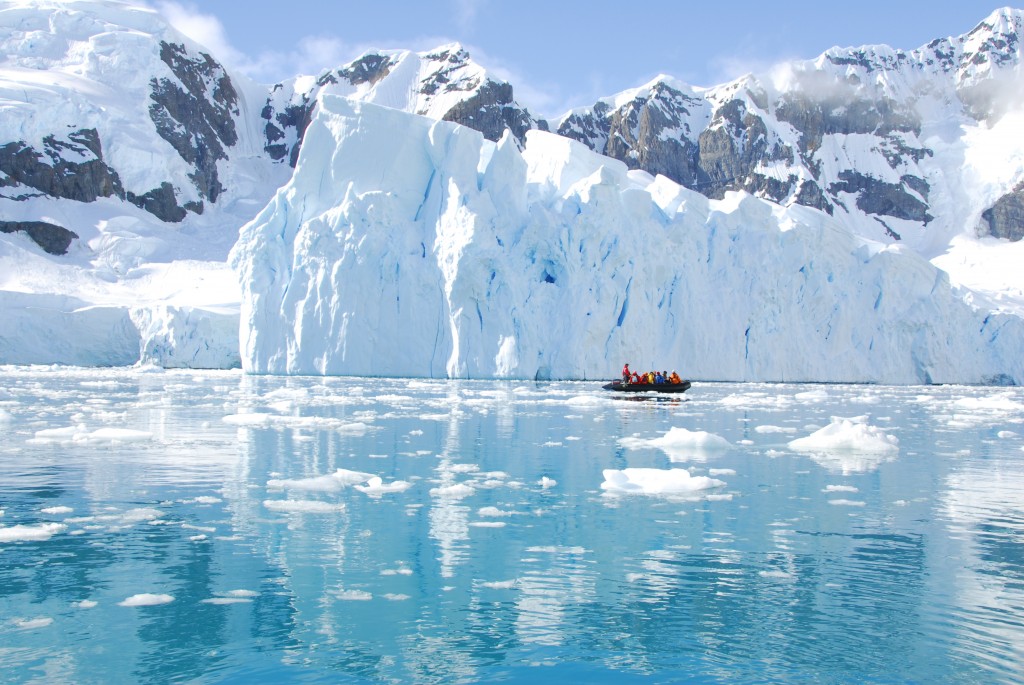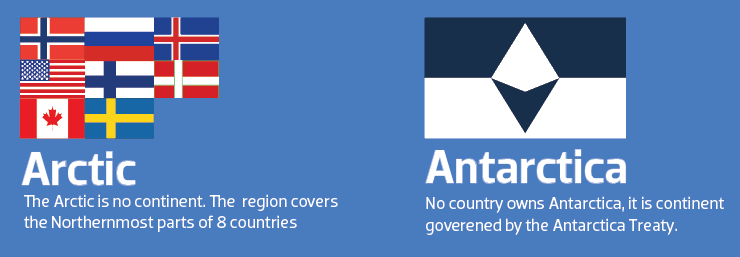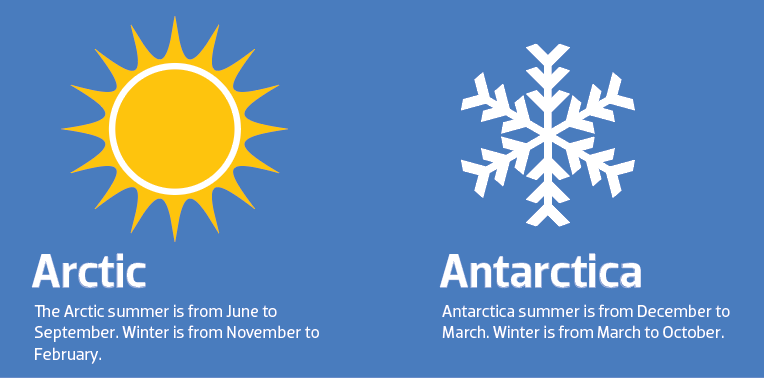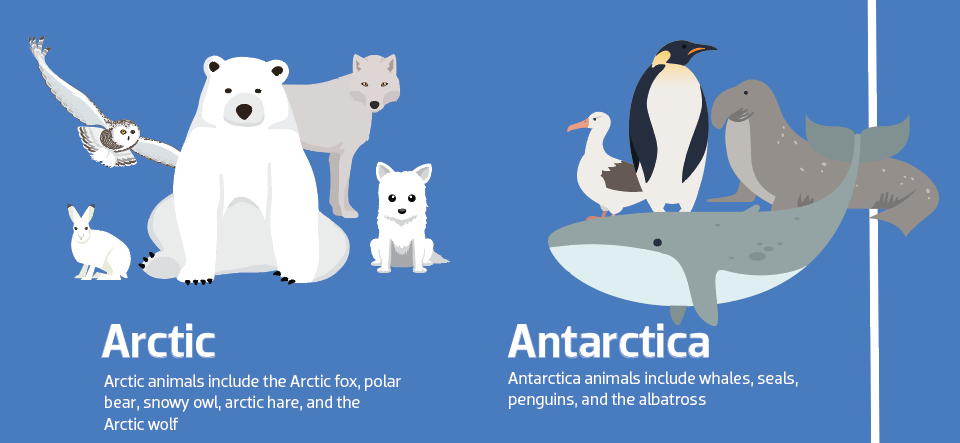Arctic vs Antarctica
As two of the most secluded and least travelled areas on this planet, not many people know a lot about the Arctic and Antarctica.
At least that much is certain: Our North and South Poles are truly remarkable places and show once again how diverse and full of unique extremes our beautiful planet earth is.
Yes, there are also some similarities between the two icy regions, the most obvious one probably being the freezing cold temperatures. However, the Arctic and Antarctica are quite literally polar opposites and differ in many ways. Let us have a closer look at these so you will never mix up the two areas again!
A little disclaimer before we get started with the main differences between the Arctic and Antarctica: Only one of them is actually considered a continent! Can you guess which one?

Continent vs ocean
The answer is Antarctica! Located at the South Pole, Antarctica is our fifth largest continent and nearly double the size of Australia. It is covered by a massive ice cap, rimmed with sea ice, and surrounded by the Southern Ocean. Due to the incredibly thick ice sheets, Antarctica is also the world’s highest and driest continent!
On the other hand, the Arctic is not considered a continent but an ocean. It is covered by a permanent thin layer of sea ice and surrounded by the land of the eight countries that are within the Arctic region. These countries are namely Iceland, Norway, Sweden, Finland, Denmark (Greenland), Russia, the United States (Alaska), and Canada.
On another note: With about 14.2 million to 14.5 million square kilometres, the Antarctic and Arctic are actually not that much different in size!

North vs South Pole
The Arctic is based on our earth’s North Pole, whereas the Antarctic is located at the South Pole. The Arctic region is less secluded due to its connection to Europe, North America, and Asia. Therefore it’s not only inhabited by polar bears but also by people who learned to deal with the freezing cold temperatures. On the other hand, the Antarctic was the last of our seven continents to be discovered by humans in 1820. Why the delay? Mostly due to its extreme remoteness and lack of natural land connections to other continents!
The best time to visit Antarctica is between October and April (austral summer). A visit to the Arctic though would be ideal during May and September (boreal summer).

People vs people
Eight different countries are (partly) located in the Arctic region, and people have mastered life up there! Humans have actually lived in the Arctic for thousands of years and adapted their lifestyles to the extremely harsh conditions. Not so much on the Arctic’s polar opposite! Since humans set foot on Antarctic ice only about 200 years ago, no one has ever lived there long-term. While there is no human population on that continent, there are more than sixty research stations in Antarctica where people live seasonally.
Bonus fun fact: Antarctica is not a country but is governed collectively under the Antarctic Treaty. While no one owns the continent, New Zealand, Australia, Chile, Argentina, France, Norway, and the United Kingdom all claim parts of it.

Cold vs colder
As you can probably imagine, temperatures in the Arctic and Antarctic are rather chilly. But who’s winning the contest for ‘Coldest Pole on Earth’? The answer is definitely the South Pole, thus Antarctica! This is mainly due to the way larger ice sheets, and the strong winds that are blowing down there.
While the average summer temperature in Antarctica is a crisp -28°C (-18°F), the coldest temperature ever recorded there was a mind-blowing -93.3°C (-135.9°F)!
This makes the Arctic look almost tropical in comparison with a barely freezing average summer temperature of 0°C (-32°F)! The coldest temperature ever recorded there was in Greenland and set the record of -69.6°C (-93.3°F).
Penguin vs polar bear
Polar bears and penguins have never bumped into each other before in their natural habitat! How come, considering they both like the cold and icy polar regions? Polar Bears only exist in the Arctic, whereas penguins are home to the Antarctic. So they’re living on different sides of the world and would only meet if held in captivity.
While polar bears and penguins are probably the main reason tourists love to explore the polar regions, there is plenty more wildlife to discover!
In comparison, Antarctica has little diversity in terrestrial life due to the extreme weather conditions and its isolation. But the continent does score points for its exceptional marine species! Whales, seals, penguins, fish, and orca are just a few of the fascinating species that don’t mind the more than freezing conditions at the South Pole.
The Arctic however has even more diverse wildlife to offer as the temperatures allow more species to thrive. The Arctic Tundra and its permafrost let plants grow and offer a home to a range of animals. Besides Polar Bears, the Arctic is home to arctic foxes and hares, the Musk ox, reindeer, caribou, wolves, and lemmings.

Now that you have learned where you can find polar bears and penguins, don’t you want to have a look at them yourselves?
Join us on one of our adventurous trips to the polar regions and explore the unique areas yourself! Enjoy the breathtaking scenery of the Arctic or explore the stunning Antarctic peninsula on one of our vessels. Check out our website for some inspiration, choose from a range of itineraries and let our team help you plan your dream trip!

Talk to one of our experienced Destination Specialists to turn your Antarctic, Arctic and South American dream into a reality.
Contact us